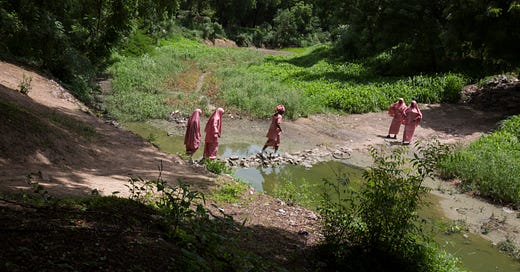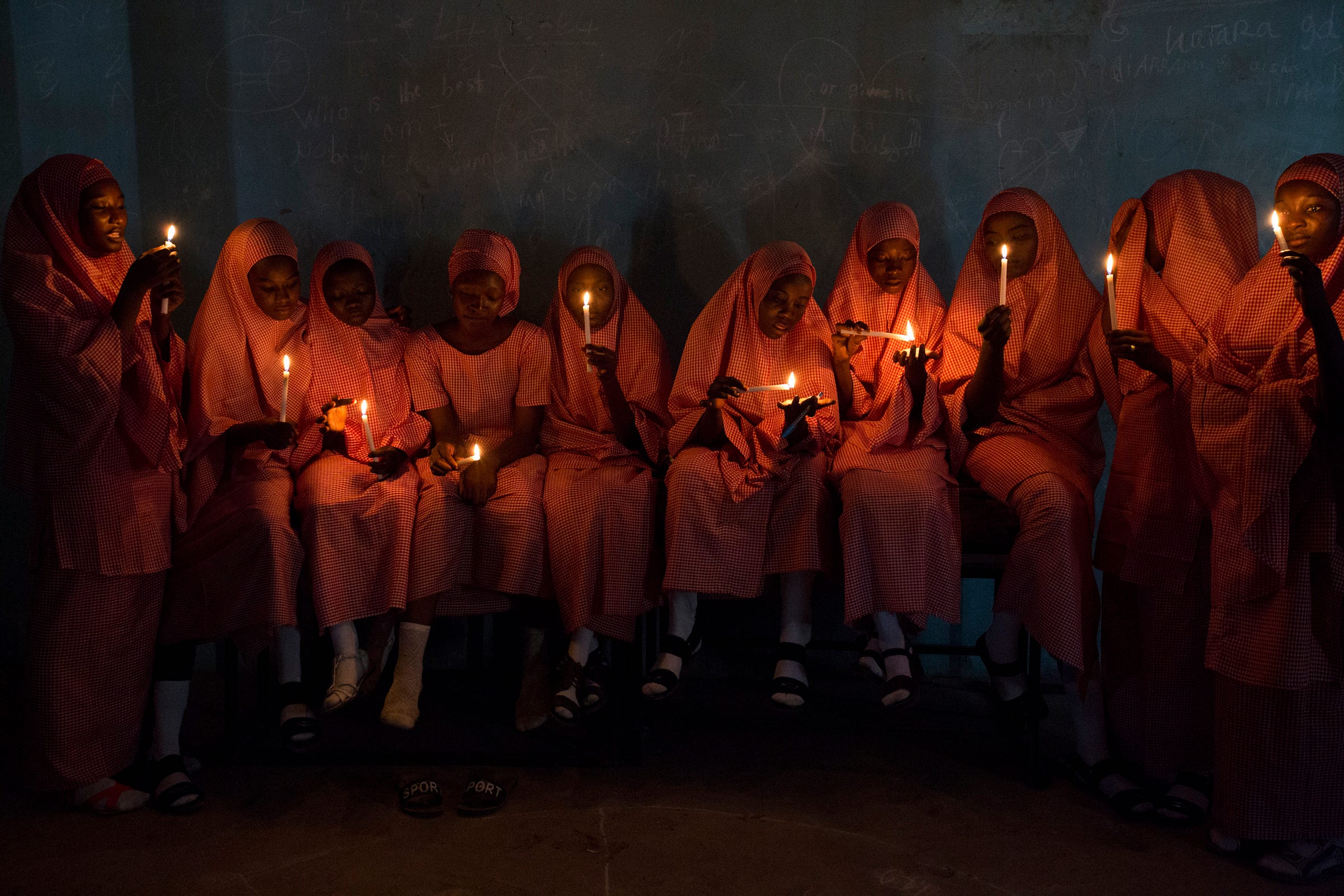This is a nearby stream. The girls might know its ripples and turns the way they know the depth of a well in their homesteads. They acknowledge its beauty, the foliage that surrounds them, in a manner more practical than a visitor might. Perhaps they hide here when they cannot stand a lesson. Or they come for water to wash the classroom floor. What is seen in the photograph isn’t merely how girls accompany each other to a stream. Notice the pair who stand with arms akimbo, waiting, as though the bridge of stones is more symbolic than they can ever let on, a ferry beyond the moment.
Rahima Gambo: “I see the space between myself and my subject as a place to pause, dwell, explore and grapple with, uncomfortably.”
The photograph was taken at the Maiduguri Park, in Borno State, Nigeria in 2017.
In a few of the interviews I had with the students about their childhood memories, they mentioned visiting the Maiduguri Park and zoo, so we decided to go there for a morning trip on one of the workshop days. I noticed that there was a small valley, with a very small stream running through. I asked the students if they could walk through it while I made video and photographs.
This photograph is special to me because it was a moment where I began to daydream beyond the reality of what exactly I was photographing. I think it’s one of those images where something happens to time and it stretches out longer than it actually is, and wanders off to another place.
This image brings up the question of how we produce fact knowledge in documentary or photo/journalistic work as it relates to our framing. What are the parameters by which we see and make meaning, how can we capture something in an open-ended way that allows it to shift, change, move and grow, how can we learn about something from the ground up, rather than imposing stories or meanings to what it is we are looking at.
My approach to photography is quite open-ended, conceptual, trans-media and philosophical. I think of photography as a fluid continuum between still and moving image. I think of photography as a long process that begins before one picks up the camera and continues on long after one puts the camera down. I think a lot about my body and it’s interiority, during the act of photography, notions of subjectivity and the agency of the subject. I see the space between myself and my subject as a place to pause, dwell, explore and grapple with, uncomfortably.
Photography’s days of machinic and visual innocence were over long ago. Once one makes peace with the terrible history of the camera and image making in Africa, and understand the camera and the photographic act as not a neutral process, then as photographers we can dwell on the many opportunities the medium gives us to deepen, become more critical and go inwards. Through the photographic process we also have an opportunity to resist the (re)production of flat and violent images that remain on the surface of things.
Two more photographs by Rahima Gambo
For each week’s feature, I send 3 photographs to the photographer, and ask them to respond to one. Here are the 2 other photographs I selected from Rahima’s portfolio and sent to her. What do you think about any of them? You can respond as a comment below.
Last Week — Lidudumalingani
“All of this historical stuff is wonderful, but before the digging of history, my photographs are concerned with beauty. I’m about beauty first. Then the digging of history, the connection of the past and the present follows. The beauty in this photograph is the quiet and isolation that exists in this chaos. It’s the intensity and tension. It’s the mist that glazes everything in this delicate and natural filter.”
Thank you for reading and sharing this feature on Rahima Gambo. You can see more of her work on her website, and on Instagram. In addition, Stevenson Gallery in Johannesburg will present Rahima’s solo exhibition, Bird Sound Orientations, from 26 March to 6 May.
Every week I feature one photograph and the photographer who took it. You’ll read a short caption from me, and a statement from the photographer. My goal is to set up conversations with the work of early to mid-career African photographers. You can support the newsletter by asking anyone—or 10 people!—interested in the impact and meanings of photography to subscribe.








Gorgeous photographs. I love the colors, light and movement.
These are wonderful photographs 👏🏻